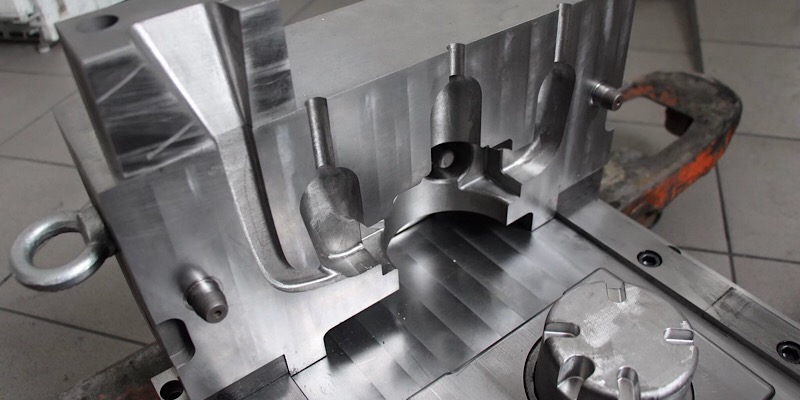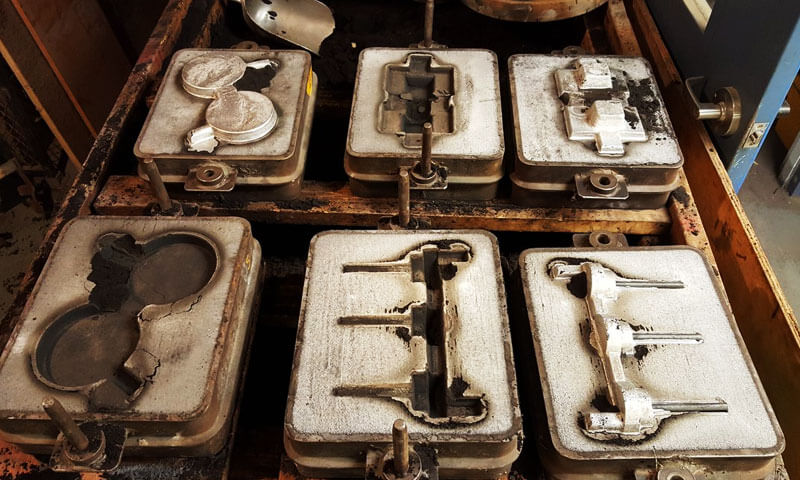Understanding the Manufacturing Refine and Maintenance Practices for Aluminum Foundry Products
The production process for aluminum foundry products is complex and needs a detailed understanding of multiple stages. From the melting of aluminum at heats to various casting techniques, each step plays an essential function. Additionally, upkeep practices ensure equipment stays effective and products are complimentary from flaws. Nevertheless, the complexities of these processes and their influence on item top quality raise important questions about ideal methods and innovative techniques in the industry.
Overview of Light Weight Aluminum Factory Products
Light weight aluminum foundry items are crucial elements in various sectors, providing a mix of lightweight stamina and corrosion resistance. These items are generally used in industries such as vehicle, aerospace, and building, where sturdiness and efficiency are extremely important. Light weight aluminum's reduced density makes it an ideal product for applications needing reduced weight without giving up structural honesty. The adaptability of aluminum enables for the production of complex geometries, satisfying varied layout requirements.
Furthermore, aluminum foundry items can be tailored with various alloys to improve details residential properties, such as boosted thermal conductivity or increased solidity. Their resistance to oxidation and corrosion guarantees longevity, making them suitable for both exterior and interior applications. The combination of these characteristics adds to the growing choice for aluminum in modern manufacturing. As industries look for to optimize performance and sustainability, light weight aluminum shop items remain to play an important function in meeting these needs.
Thawing Refine: Transforming Aluminum
The melting procedure is an essential action in the manufacturing of light weight aluminum factory products, as it changes strong light weight aluminum into a molten state appropriate for spreading. This process normally happens in a heating system, where scrap light weight aluminum or ingots are heated to temperature levels around 660 levels Celsius. The choice of heater-- be it electrical, gas, or induction-- impacts the effectiveness and cost of melting.
Throughout melting, cautious consideration is provided to the removal of impurities, such as oxides and various other impurities, which can negatively impact the high quality of the final item. Fluxes might be included in assist in this purification procedure, enhancing the fluidness of the molten steel.
Additionally, temperature control is essential to assure uniformity and protect against overheating, which can result in oxidation. Subsequently, the melting process not just prepares aluminum for casting yet likewise plays a substantial function in determining the stability and buildings of the last shop products.
Casting Methods in Light Weight Aluminum Factory
Different spreading methods are utilized in aluminum foundries to develop premium elements, each matched to various applications and requirements. Among the most commonly made use of techniques are sand casting, pass away spreading, and financial investment casting. Sand casting makes use of a combination of sand and binder to develop molds, permitting intricate forms and large components (Aluminum Casting). Pass away casting, defined by the high-pressure injection of liquified aluminum right into steel molds, produces precise and repeatable elements, perfect for automation. Investment spreading, or lost-wax casting, includes developing a wax design that is covered in a ceramic shell, making it possible for intricate styles and fine details. Each strategy has its advantages; sand casting is cost-effective for low-volume manufacturing, while die spreading supplies effectiveness for high-volume runs. Investment casting is preferred for components requiring extraordinary precision and surface area coating. Selecting the proper technique relies on elements such as production quantity, component complexity, and product residential or commercial properties
Finishing Processes for Aluminum Parts
After casting techniques have formed like this the light weight aluminum components, completing processes play a substantial role in enhancing their performance and visual charm. These procedures generally include machining, surface therapy, and covering applications. Machining includes specific removal of product to attain wanted measurements and surface area top quality. This is essential for ensuring that parts fit flawlessly right into their designated applications.
Surface area therapies, such as anodizing and polishing, are utilized to enhance rust resistance and enhance visual qualities. aluminum casting company. Anodizing, specifically, offers a protective oxide layer, making the light weight aluminum extra long lasting and visually enticing

Upkeep Practices for Longevity
Implementing routine upkeep methods is crucial for making sure the long life of light weight aluminum foundry products. Regular examinations ought to be carried out to determine wear and tear, as very early discovery can protect against costly repair work and extend the lifespan of elements. Cleaning up equipment and machinery routinely reduces the risk of contamination, which can negatively affect item quality. Lubrication of moving components is also important, as it lowers rubbing and wear, boosting functional effectiveness.
Furthermore, the implementation of a preventive upkeep timetable helps in methodically resolving prospective issues prior to they intensify (aluminum casting company). This consists of checking for leaks, ensuring correct positioning, and adjusting equipment. Staff training on proper handling and maintenance techniques promotes a society of care, which is vital for sustaining item integrity. Finally, recording maintenance tasks offers beneficial insights into efficiency fads, enabling notified decision-making pertaining to future maintenance methods
Quality Assurance and Testing in Aluminum Factory Manufacturing
Quality control and testing are paramount in look at more info aluminum foundry manufacturing, as they assure that end products meet specified requirements and client expectations. This procedure starts with resources examination, guaranteeing that light weight aluminum alloys follow needed structures. Throughout the manufacturing cycle, in-process evaluations are carried out to check parameters like material, temperature, and stress circulation.
When spreading is complete, different tests-- such as dimensional checks, visual evaluations, and non-destructive screening-- are done to determine any kind of defects. Mechanical residential properties, consisting of tensile toughness and firmness, are evaluated with standardized screening methods.
Adherence to industry requirements, such as ISO and ASTM, is crucial for making sure product top quality. Statistical procedure control methods are typically used to examine manufacturing information and facilitate constant improvement. By implementing strenuous high quality control a fantastic read procedures, aluminum foundries can boost product integrity and reduce waste, ultimately bring about higher customer satisfaction and operational performance.
Regularly Asked Concerns
What Are the Ecological Influences of Light Weight Aluminum Shop Operations?
Aluminum foundry operations can lead to considerable ecological influences, consisting of air contamination from emissions, water contamination from waste discharge, and energy intake adding to greenhouse gas discharges, inevitably affecting regional environments and community health and wellness.
Exactly How Do Aluminum Prices Impact Factory Production Choices?
Aluminum rates considerably affect shop production choices; higher costs might bring about reduced result or increased efficiency measures, while lower prices can encourage expanded production and investment in new modern technologies to boost competition and productivity.
What Precaution Are Crucial in Aluminum Foundries?
Vital precaution in light weight aluminum foundries include protective equipment, appropriate ventilation to lower breathing of fumes, normal devices upkeep, training on emergency treatments, and adherence to security protocols to avoid crashes and injuries among workers.
Can Aluminum Be Recycled, and Just How Is It Processed?
Light weight aluminum can certainly be recycled. The process involves collection, melting, and reforming the product right into new products, considerably reducing energy intake and ecological impact contrasted to main aluminum manufacturing while protecting worldly high quality.
What Are Common Problems in Aluminum Casting and Their Causes?

The production procedure for aluminum foundry products is elaborate and requires a comprehensive understanding of numerous stages. Aluminum shop items are critical components in different industries, offering a mix of lightweight strength and deterioration resistance. The melting process is an essential step in the production of aluminum shop products, as it transforms solid aluminum into a liquified state appropriate for spreading. Executing regular upkeep techniques is vital for making sure the durability of light weight aluminum factory items. Quality control and screening are paramount in aluminum foundry production, as they ensure that final items meet defined standards and consumer expectations.